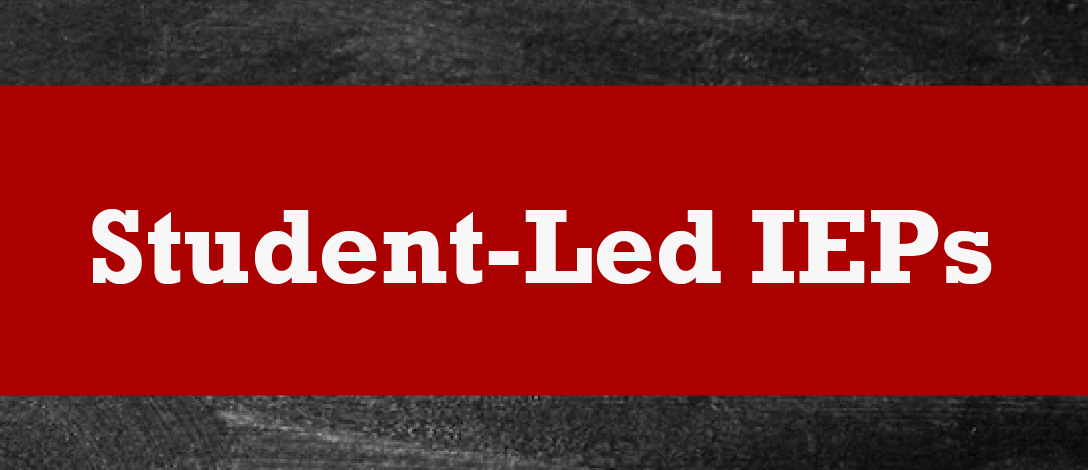Student-Led IEPs
Self-paced training about best practices in developing student-centered Individualized Education Programs (IEPs)
About this Training
This self-paced training is designed to inform educators and families/caregivers about best practices in developing Individualized Educational Programs (IEPs) that are student-centered and student-directed. View the complete Student-Led IEP (SLIEP) course in Canvas, or see details below.
Course Objectives
- Discuss student engagement levels and benefits of student IEP participation
- Describe steps for developing student skill sets focusing on self-determination for IEP participation
- Identify and explore supporting instructional materials that can be infused or integrated into existing curriculum
- Identify a variety of IEP participation formats to support students in leading their IEP meetings
- Reflect, apply, and develop a plan for next steps back in your district
Course Format
- The series consists of six modules that include written and video content.
- Review modules individually or as a team.
- Plan to spend approximately 30 minutes on each module.
- Reflect on the content by completing activities at the end of each module. You may wish to download the Student-Led IEP Activity Workbook to record your reflection activity responses.
Course Modules
After a brief introduction to the Center for Change in Transition Services, Module 1 begins with an overview of transition planning for students with disabilities. It identifies the four performance indicators for secondary transition and the role that quality Individual Education Programs (IEPs) play in preparing students for post-school success. Then it explores the format of traditional IEP meetings and what it means to include students’ voices in those meetings. It highlights the importance of self-determination and other benefits of increased student participation in their IEPs. Finally, it outlines four steps for preparing students to be involved in their IEP meeting.
Module 2 addresses the first steps towards involving students in their IEPs: assessing students and informing/involving their families and caregivers.
The second step in preparing students for IEP involvement is developing the skills of self-awareness, self-advocacy, and self-determination.
Module 4 addresses ways to ensure that students understand their IEP, including the components and their rights. These are areas that students should be familiar with as they prepare to lead their own meetings.
Module 5 addresses the final step in preparing students to lead their IEPs: planning for participation. It explores ways to prepare students and to make delivery accommodations in meetings.
Module 6 begins by exploring what student involvement in the IEP looks like in elementary years, middle school years, and high school years. It introduces a tool for thinking about approaching complex change. And finally, the IEP Continuum from Module 1 is revisited to set goals for next steps.
Please consider taking five minutes to reflect on what you’ve learned throughout this course and share it in the Post-Training Reflection Guide.
Your feedback helps us create materials that are meaningful and accessible to stakeholders across Washington state.
